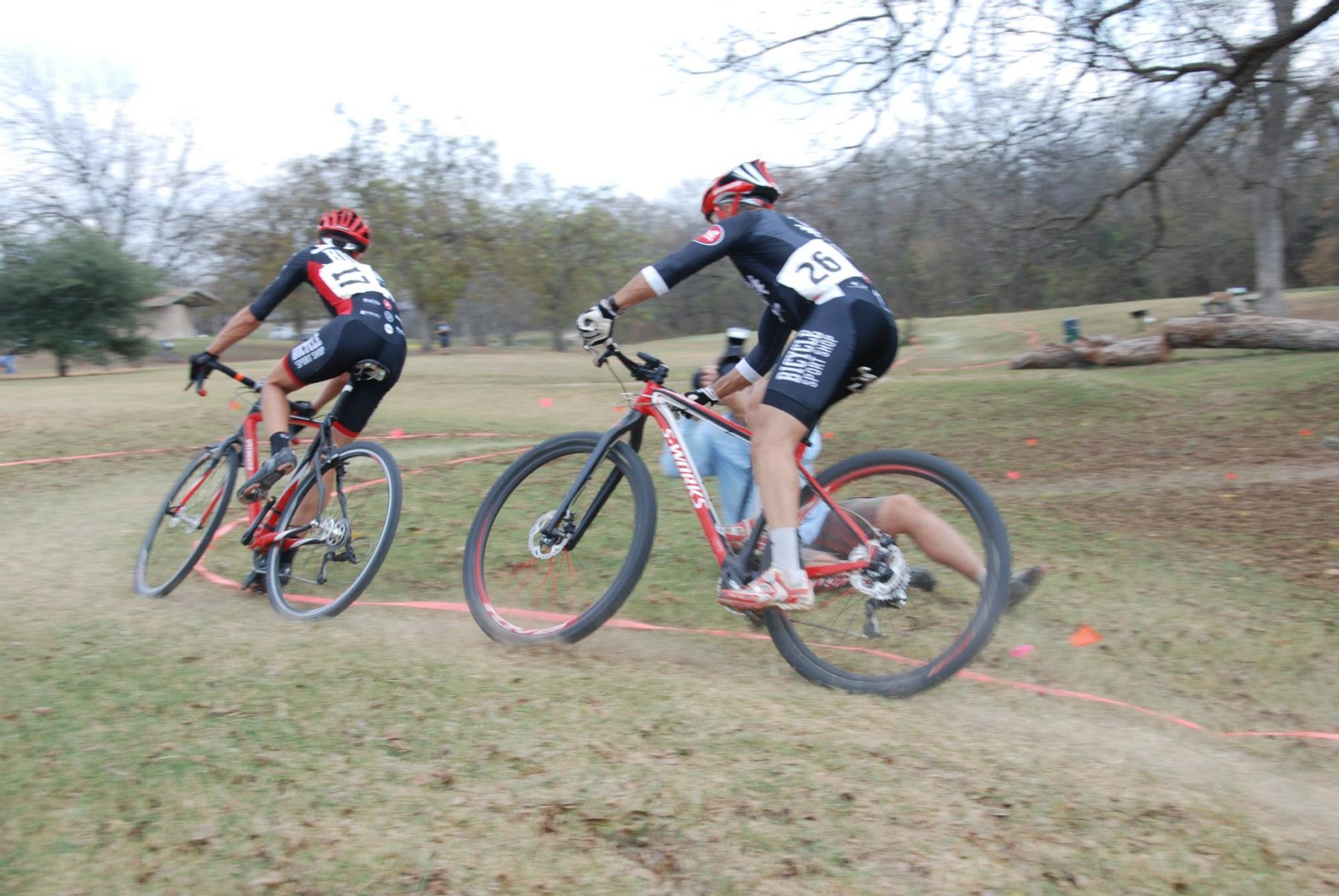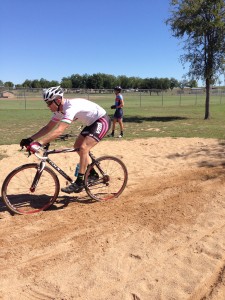Cyclocross: An Introduction

If you don’t know about Cyclocross (CX) by now, you will certainly find out by the end of the 2015 season when the national championship will be right here in our backyard at Zilker park.
CX has deep roots in Europe, where the weather is usually nasty from October until late January—depending on where you are. Rumor has it, CX was started in France around the 1900s by cyclists who didn’t want to stop training during the then off-season of fall. They would ride through rain, blizzards, and muddy fields to make them stronger, give them better handling skills, and motivate them through the harsh winters. So, for most of us true CXers, when we see the weather turn gray and the rain coming down, it just puts a smile on our face, knowing it will either be good practice or a good race.
CX has quickly become the fastest growing section of cycling, as compared with road biking, mountain biking, and triathlons. Why? Well, to me, the answer is pretty simple.
First, races are short. Depending on you whether you’re a total beginner or seasoned pro, your race is somewhere between 30 minutes to 1 hour long. You’re probably thinking, “How tough can a 30 minute race be?” Well, if you’ve ever had to do something so tough that makes you consider pretending to have a flat just so you can stop the pain and insanity? This would be it. Whereas road racing is more like a chess game among the top players, and mountain biking is all about maintaining yourself on the edge of your lactate threshold and staying smooth around corners and obstacles, CX is all about making your legs work way harder than they want to, with lots of dismounts and remounts. It’s like a fist fight from the beginning, and then it becomes a chess game. Your heart rate is way above your LT (what I call the heart attack range); you’re trying to read your opponents as you dismount and run up muddy steep hills with your bike on your shoulder; and you’re riding through sand pits, no longer in control of where the bike goes. And don’t forget about dismounting right before that 16-inch barrier—and then remounting while you are going somewhere between 10-15 mph (yeah, you usually hear some guys screaming in pain when the wrong part of the body hits the saddle first).
The second reason for the recent popularity of CX is that its spectator friendly. The races are usually held in parks and involve grassy sections, hills, and some single track. There is lots of dismounting, because there are wooden barriers and very steep hills that require you to dismount and carry your bike. This makes for a lot of action, and most of the course is visible to spectators—those brave souls we call family who support us in our sport during cold, wet, muddy weekends and hand us water bottles.
The final reason it is so popular is that it is by far the most adrenaline-packed discipline of cycling. There are always plenty of spectators, most of them pretty loud, dressed in all kinds of costumes and usually with a few drinks in them. I can’t remember how many times my ears have been blasted with spectator horns or how often I have been slapped on my Gluteus Maximus with rubber chickens in these events (thankfully my body is in so much pain that all of that just makes me suck it up and push harder).
I should mention that more juniors and kids are getting involved in CX, since it is very skill intensive and there is no fear of running into cars. My two kids always go with me. My now 5-year-old son Monkey (sorry Nik) has been doing it on his push bike, and my 12-year-old daughter Ava has more fun picking what long socks to wear than caring about how she did.
I highly recommend looking at the calendar of races of www.TXBRA.org and going to one that’s close to you. And, remember: The wetter and muddier the conditions, the more fun it is to watch and race. After all, the history of the race was based on motivating cyclists to train hard and push themselves through the nastiest part of the season.
One more thing you may notice is how CX pulls from every other discipline of cycling. Of course, there are those of us who are just pure CXers, and everything else is just training for the CX season. But for roadies, this is a chance to do something different, get off the road, and hone in their handing skills, which will inevitably save them from an accident in their road racing season.
Mountain bikers love it because it is shorter than a typical mountain bike race, with a similar format. Triathletes like it simply because it involves running and cycling, and they figure, “Well I can do that, so the rest should be easy.”
What I personally enjoy at the start line is the mix of all these people coming together: They are all friendly and smiling, cracking jokes, and making fun of each other literally until the gun goes off. Then, it’s a pure MMA-style fist-fight between among competitors, the obstacle, and sometimes yourself. Once the race is over, everyone is talking about the experience and congratulating each other, no matter where they placed. Everyone has fun, whether you are racing, spectating, or volunteering. And, above anything else, CX is fun for the whole family.








